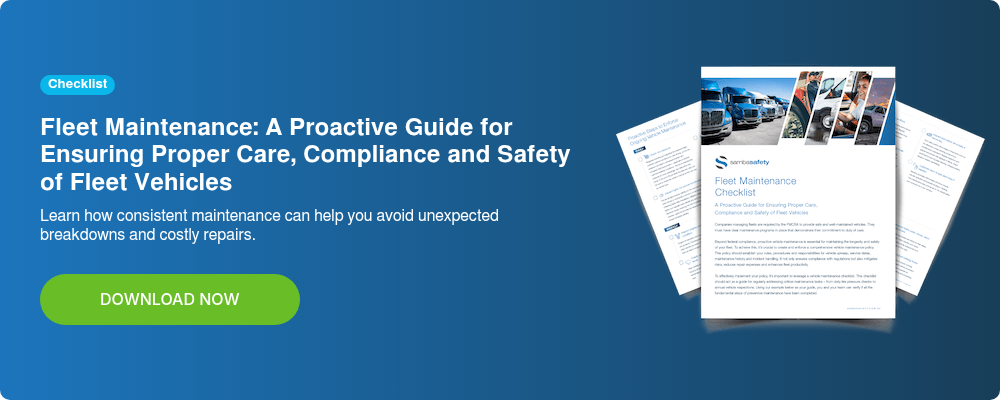.jpg)
In the fast-paced world of fleet management, where deadlines and deliveries are constant, it’s easy to deprioritize vehicle maintenance. However, neglecting your fleet maintenance policy is a major oversight – when safety is compromised, there can be severe consequences for both drivers and the public. In this blog post, we’ll dive into the critical reasons why a fleet maintenance policy should never be underestimated and how overlooking it can pose significant risks.
The Domino Effects of Neglect
Road Safety and Crash Risk
Minor vehicle issues are routine – even mundane – for those who spend all of their time out on the road. Tempting as it may be to write bumps and bangs off as nuisances, the consequences can be severe.
Unfortunately, in a system as complex as a vehicle, small problems can have major impacts. Skipping even one service can cause a chain reaction of potential hazards. Imagine a delivery truck hurtling down the highway with worn-out brakes or faulty steering components – a failure at that speed can be catastrophic for everyone unfortunate enough to be close by. The vehicle’s upkeep will be called into question, and if you are unable to show a clear track record of maintenance, the legal, financial and reputational consequences to your business would be immense.
Skyrocketing Costs
Vehicle repair costs are the most obvious financial consequence of infrequent maintenance. Though prices vary by vehicle type, service needed and region, a 2023 report published by The American Transportation Insitute (ATRI) indicated that repair costs are up 12% across the board.
Additionally, regulatory bodies like the FMCSA and DOT enforce strict guidelines on vehicle maintenance. Failure to meet these standards can result in hefty fines, and in the worst cases, legal action. Lawsuits involving large truck crashes are especially crippling, with settlements often exceeding $1 million and averaging $22 million. That’s a crisis for a company of any size.
Costs could continue to climb, even after a formal resolution. It’s all but guaranteed that a company’s insurance rates will spike after repeated violations or a crash. Underwriting losses climbed to $3.3 billion in 2022, forcing commercial auto insurers to be more cautious and selective with their policies. Like regulators, auto insurers seek a clear commitment risk management – a higher risk profile could make your organization an unsafe bet.
Managing Your Maintenance Schedule
Fortunately, advancements in technology have made fleet maintenance more manageable and efficient. Telematics systems, for example, provide real-time data on the condition of vehicles, allowing fleet managers to schedule maintenance proactively. Predictive analytics can anticipate potential issues, enabling preemptive measures to be taken.
Embracing technology not only streamlines the maintenance process but also contributes to overall safety. For instance, sensors and monitoring systems can detect abnormalities in a vehicle’s performance, signaling the need for immediate attention. These technological aids empower fleet managers to address potential problems before they escalate, reducing the risks associated with neglected maintenance.
Technology is a valuable tool, but it’s not the end-all-be-all of effective fleet management. Manual inspections and repairs are just as critical. You want the entirety of a vehicle to be in good working order, of course, but some systems are far more critical to driver safety than others. Keep a close eye on:
- Tire pressure
- Fluid levels
- Interior and exterior lights
- Proper seatbelt function
The more diligent you can be, the better – we recommend inspecting each of these components before each trip. Incorporating basic maintenance into your daily routine will make it a mindless habit, minimizing the need for larger, more expensive repairs in the future.
Follow Our Fleet Maintenance Policy Checklist
In the complex web of responsibilities that come with managing a fleet, prioritizing maintenance is not just a matter of operational efficiency — it’s a matter of safety. Fleet managers should take proactive steps to ensure that their vehicles remain in optimal condition, reducing the likelihood of crashes and contributing to a safer, more reliable transportation network.
Ready to rev up your maintenance efforts? Our fleet maintenance checklist provides a complete list of tasks to complete on a daily, weekly, monthly, annual and semi-annual basis. Click the link below to download now.




